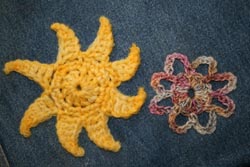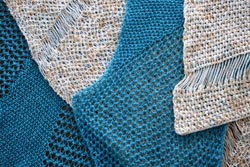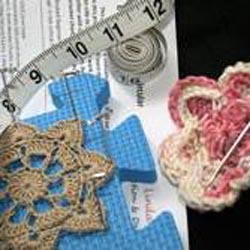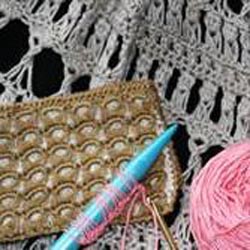I was asked a couple of week ago to share how to attach fabric to crochet. It was a little bit of perfect timing as I was working up a scrap yarn handbag, and it could really benefit from a lining.
There are actually a few ways to attach fabric to crochet.
Hand Sewing
The first method is tried and true, hand sewing. If I am creating a lining for a bag, I cut my fabric the same size as my project. Then I seem the side (this is definitely true for handbags). Now I am ready to add it to my crochet.
Since I cut the fabric the same size and then seemed it, you will notice that it is now slightly smaller than the project….this is perfect. I insert the lining, and now I fold the raw edge of the top of the fabric over. I pull out the hand sewing needle and whip stitch the top edge of the folded fabric to the crochet.
Whip stitching is simply entering the needle from the same side of the fabric. Essentially it is making a loop of thread through both pieces of fabric.
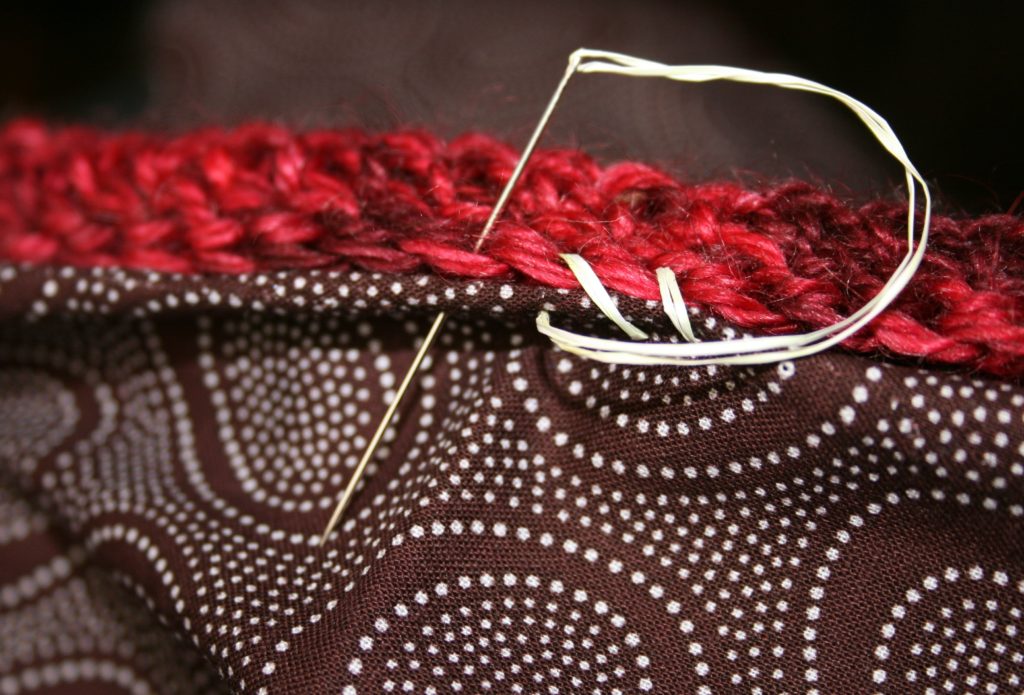
Machine Sewing
Another way to add fabric to crochet is machine sewing. Honestly I do not pull out my sewing machine for what I would view as a small project, but once I did work a bunch of crochet squares to a bunch of fabric squares to make a blanket, and in this case I definitely pulled out the machine. You do need to use a bit of caution and know the machine you are using, but I basically used the fabric and crochet just as I would other machine sewing projects.
Place the fabric on the crochet, if you are turning under a crochet edge (as in typical machine sewing), then just lay the fabrics together and stitch. If the fabric is more like a lining fold under the raw edge of the fabric and stitch to the crochet.
I have found that I prefer the crochet fabric to be the bottom fabric. I lower the feed dogs (the little textured metal tracks that help pull the fabric through the machine), and thus have to help the fabric through with a little gentle pulling. I prefer this approach to having the crochet on top, as I have found the crochet can get a bit hung up on the presser foot or snag on the needle.
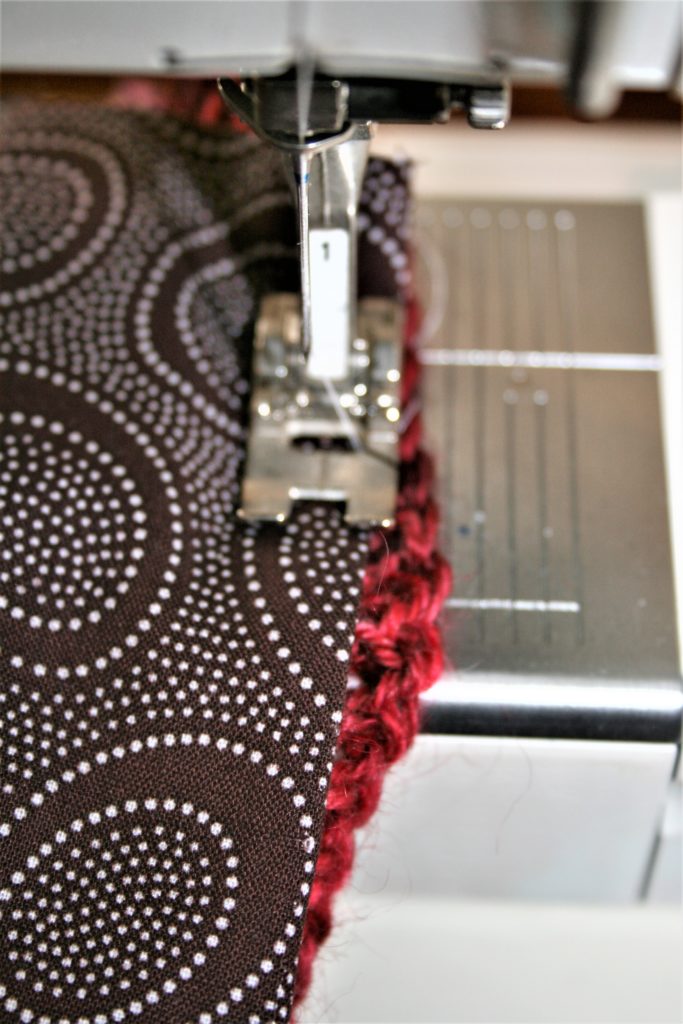
As machine sewing will create a tighter stitch then hand stitching, it can, and most likely will create a line across your crochet. If hand sewing this can be easily avoided as you do not have to sew all the way through the fabric, you can sew through half of a crochet stitch instead.
Fusible Interfacing
Another way to adhere fabric to crochet to using a double sided fusible interface. This is a product that works a bit like magic and can be found most places you find fabric. You follow the package direction, using an iron and basically glue the fabric to the crochet. I really have done very little of this, and even then I only worked it in small areas that I wanted to add crochet to large pieces of fabric. It will stiffen the crochet, and depending on the yarn used, it may not appreciate the iron, so beware. Test your fabric and your yarn before going down this rabbit hole.
Needle Felting
In addition you can add crochet to fabric by needle felting. To needle felt crochet to fabric you need to be mindful of the materials you are using. First your yarn, it tend to work best with wool, preferably not superwash. The fabric should be one that can take a bit of abuse, as it is going to be punched repeatedly with a needle. I prefer working with denim, linen or canvas, but have worked on cottons. You need a needle felting needle (it is a needle that actually has small barbs on it that you can feel running you finger up from the needle from the point), and a piece of foam (a pillow can work too).
You place your crochet where you want it on the fabric. Place the foam behind the fabric, and push the needle through the crochet and fabric, into the foam. You repeat this process until the crochet is adhered. You will notice that on the back of the fabric that yarn is being pushed through. Times will vary greatly, and some fabrics/yarns are not suitable and will not stay in place no matter how long you work it.
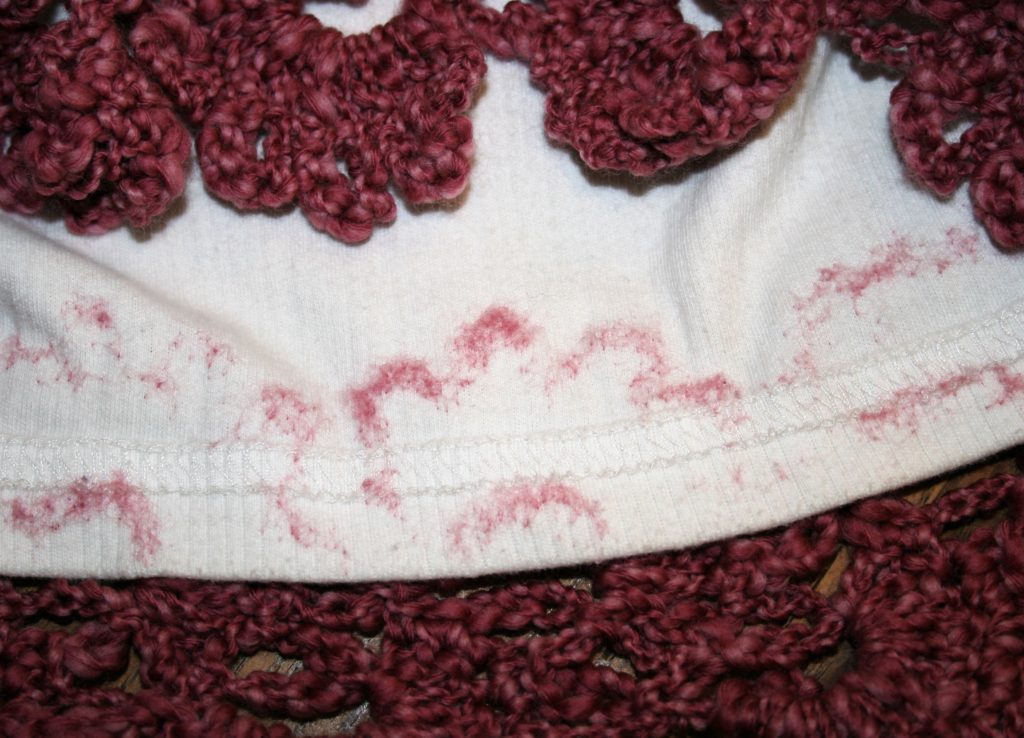
Crochet Joins
Finally one additional way to add fabric to crochet, simply crocheting it on. There is a little prep work to make you project easier, but it is completely doable. I fold the raw edge of the fabric over, and find a small crochet hook, a steel crochet hook usually works fine, and then I evenly push it through the edge of the folded fabric creating small holes. I then continue working with the small hook and crochet through these holes into the crochet fabric.
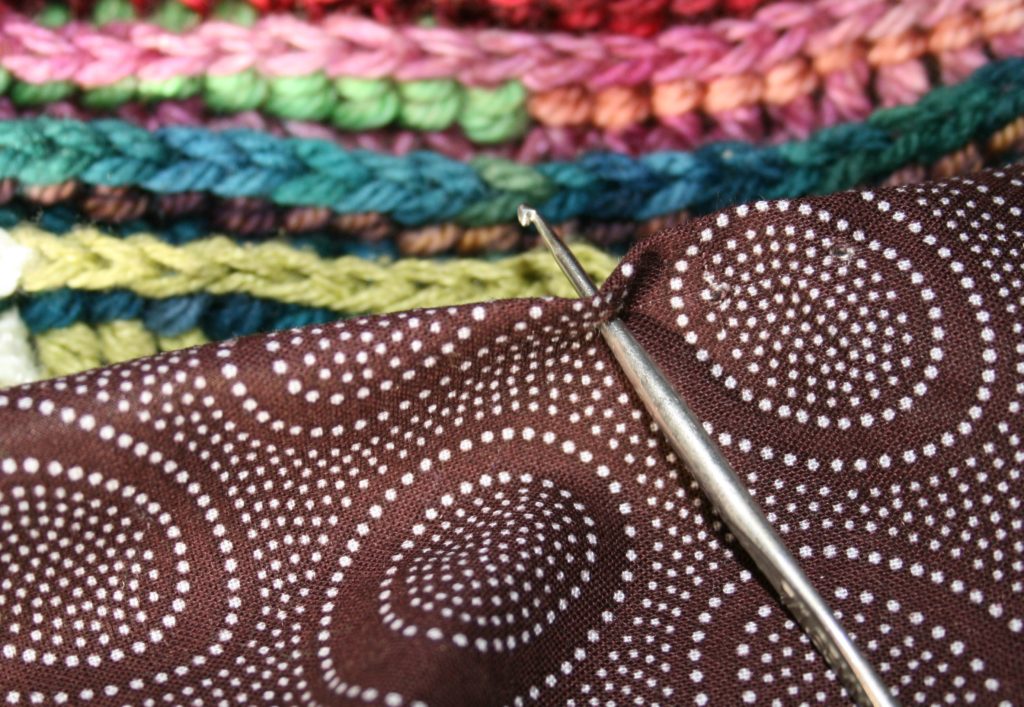
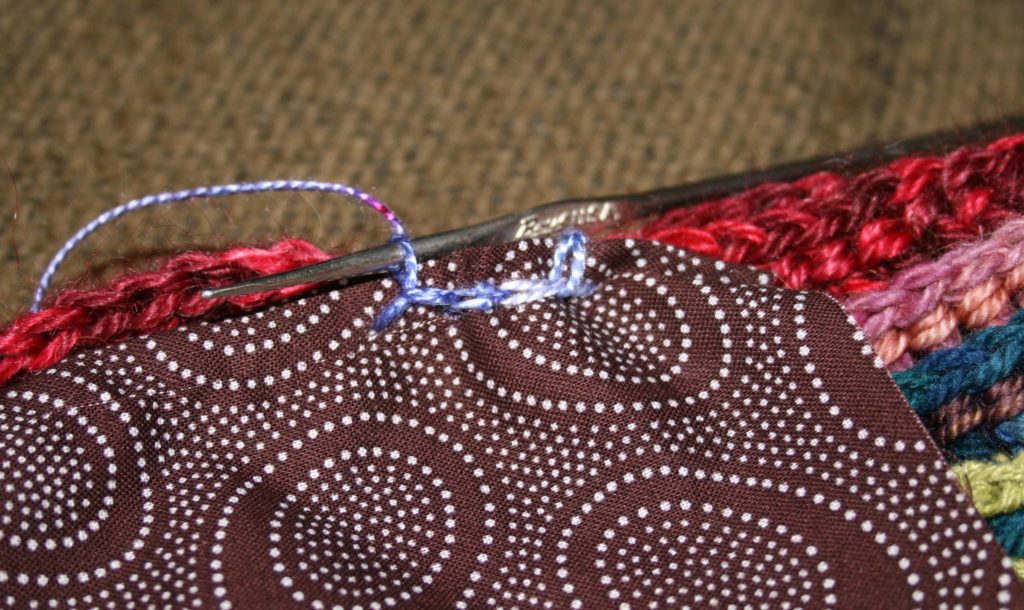
To make crocheting the fabric on a bit easier, you can take a yarn needle and work a blanket stitch (inserting the needle in the same side of the fabric in a similar movement as a whip stitch, but before the loop pulls closed you insert you needle in the loop, this makes an edge of thread/yarn at the top of the fabric) around the fold fabric in a yarn of your choice. You then crochet in the loop created.
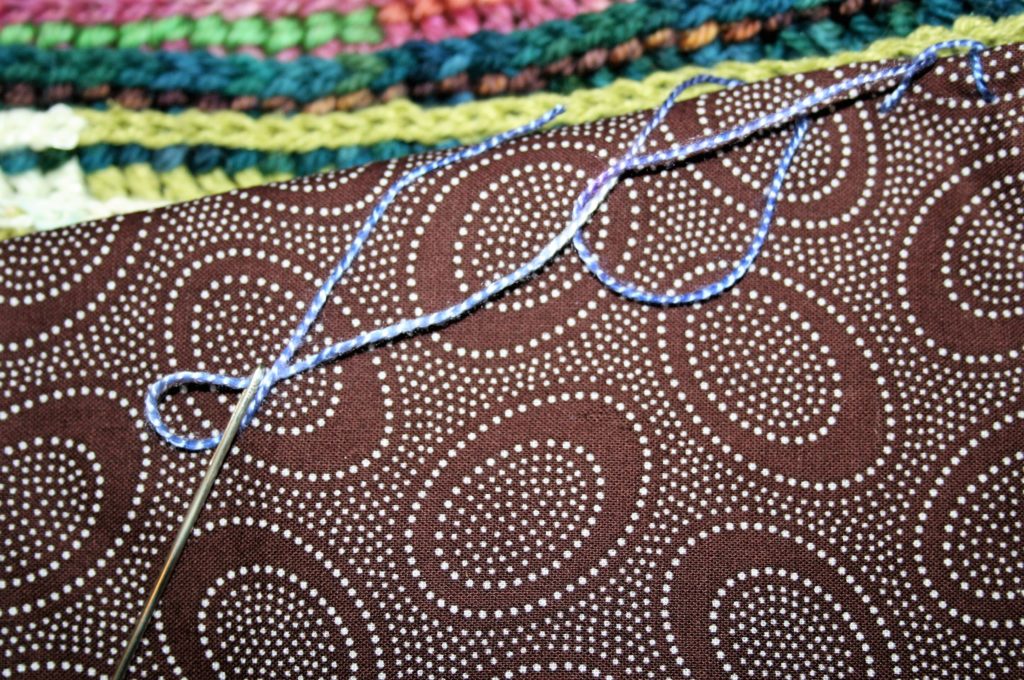
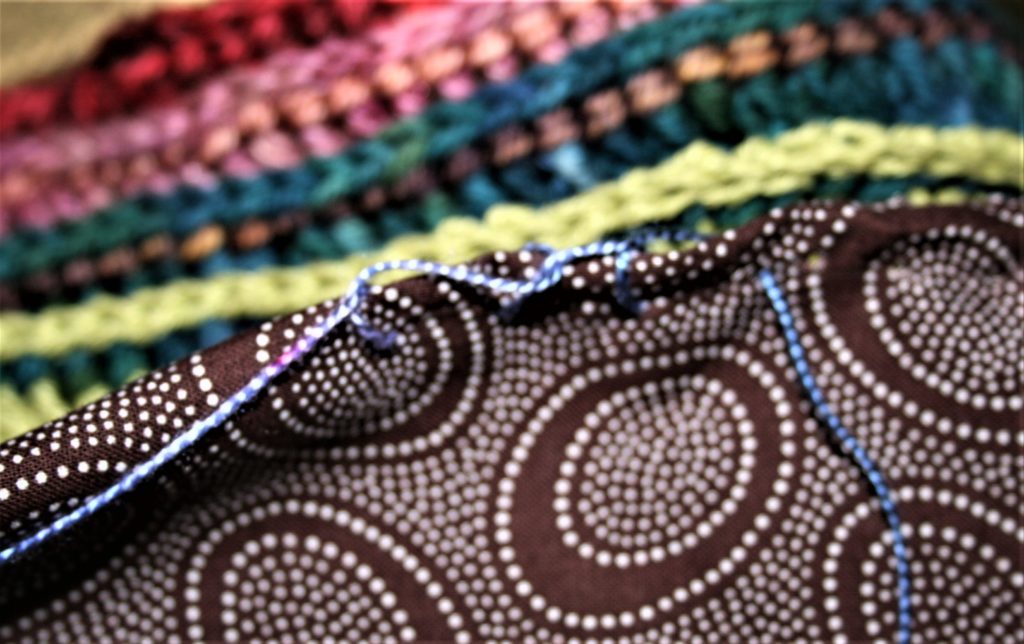
A Little Extra Padding
To add a little bit of stiffness to the project, or a bit of body to it over all, consider adding a bit of quilt batting between the fabric and crochet.
Some of these techniques are more comfortable than others, and much of that can be related to your comfort level with sewing in general. Just remember like crochet, it can be forgiving, so give it a try.


